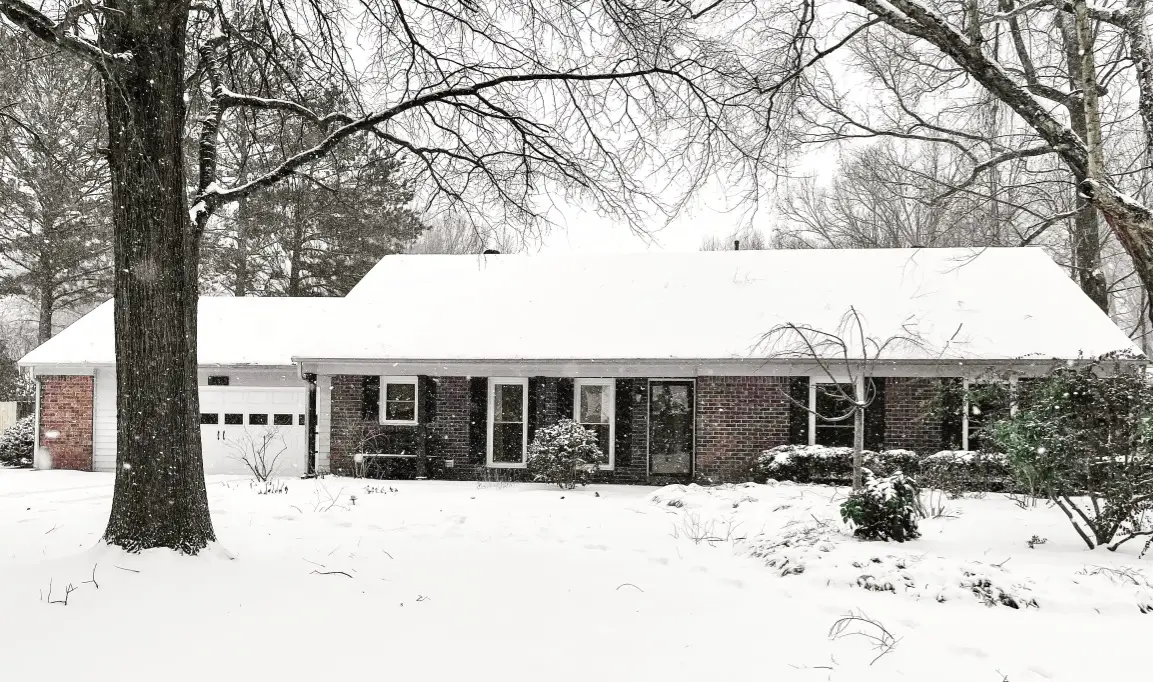
As a first time home buyer, I wasn’t sure what should be a “deal breaker”. Of course you are never going to find the perfect house, but what is it about a house that should or would make you say no?
For me, there are only three. And they are all things you can’t change. Read on to learn my deal breakers as a first time home buyer and 20 bonus considerations shared from my community that I polled on Instagram (don’t follow along? You are missing out!! Join the fun on Insta here).

Deal Breaker #1: Location
Physical
To me, this is the most important factor and something you definitely can’t change. When house hunting, it’s important to take time to ride around, get the feel for different parts of town, walk different neighborhoods and meet/talk to neighbors to get the inside scoop. We definitely did. Something else that plays a big role in re-sale value is the school district, so keep this in mind even if you don’t have kids.
Neighborhood
Location is going to affect things including your daily commute and the people you may encounter on a daily basis. We fell in love with a house before our Riverdale Ranch, but had second thoughts after meeting the neighbor who was drunk, holding a glass of whiskey sitting out on her porch at 2 o’clock in the afternoon sharing that one of her passions was feeding the feral cats in the neighborhood. Unfortunately, this was a deal breaker for us.

Geographical
Location may also mean geographical location, or the lay of the land. For us this wasn’t a dealbreaker, but something additional we definitely had to work into the budget. Our Riverdale Ranch is in a “flood zone” according to FEMA per the elevation report. This is an additional expense we had to foot to obtain and keep our mortgage in the form of flood insurance. The previous home owner said the property had not flooded in the 30 years she had lived there, and had not even come close since the city built a drainage lake down the road to direct and hold rainwater and runoff. I will say our backyard gets soggy in the spring (something my husband is working on), but it was comforting to know she did not deal with flooding every time it rained.
Did you know? If you are in a flood zone and need to obtain a mortgage to purchase your house, you are required to get flood insurance if you fall into a FEMA determined “flood zone”. But, as soon as you pay off your mortgage and own your home outright, flood insurance becomes optional. The previous homeowner had not paid for flood insurance for the past 15 years since paying off her mortgage. It is a risk you must calculate, but worked out for her.
Deal Breaker #2: Floor plan
Layout
Again, this is something you can’t change. For me, I was adamant about a single level home. I don’t like stairs, so two or three story homes were a deal breaker for me. I know that some people feel adamant about an open floor plan. Benefits include being able to cook dinner while watching kids in the living room, making spaces feel bigger, and more natural light. However, I know with many more folks working from home the trend is shifting back to homes with more designated rooms and spaces. This is personal preference, but be sure to consider what you like because floor plan is not something you can easily change. You can often take walls down as long as they are not load bearing, but it’s much easier if the house is already set up in a way that flows to your liking.

Square Footage
Floor plan also includes square footage. This one is harder to gauge if you are coming from a small apartment, how are you supposed to know how much space you need? My husband and I live in an 1800 sq. ft. 3bed/2bath ranch and it is perfect. We may decide to have a family down the road (God willing), and I think 1800 sq ft is still great for a family with young kids. The only thing it may be missing is a designated “playroom” (or room for toys). This may not be a thing, I don’t have kids yet but just anticipating I will not like toys being all over our main living room.
With square footage, consider how more space also comes with more upkeep and higher utility bills. More space also comes with the pressure to fill the space, which is expensive. Many believe that more “things’ leads to clutter and weight. Living minimally can lift that weight and feel freeing. Just something to keep in mind.

Deal Breaker #3: Big red flags during inspection
Foundation or roof issues
Foundation or roof issues are most likely some of the biggest ticket items that may be found during an inspection. Of course, when problems are found during the inspection it’s up for negotiation between the buyer and seller to determine who will pay or fix it. However, if it’s a competitive seller’s market (which it was when we bought our home), you don’t have much room to negotiate as the buyer. It may be necessary to get additional professionals out to evaluate the extent of problems and estimate the price to fix them to decide if this is something you should take on, or walk away from. Often, it is good to negotiate and ask for money from the seller to hire your own professional and do the repairs yourself so you know they are done to your standards.
You can go into the attic yourself and check for leaks which may indicate roof problems. Often as a homeowner, if you identify shingles missing you can typically get it fixed easily. Roofing companies are knowledgable about recent storms and can help attribute to storm damage to get payment assistance from insurance. However if you move into a house with roof problems, you will most likely be footing the bill and it can be a pricy one.
Recent flip?
It is imperative to make sure no corners were cut if the home you are looking at was recently renovated. Unfortunately, faulty flips are common and you don’t want to be stuck in someone else’s get rich quick schemes.
Opting for a home warranty may put your mind at ease. In case something was overlooked, or a big issue arises within a year after closing, the home warranty can help offset cost. Often the warranty is something that can be negotiated in the terms of a sale, and be offered by the seller.

20 additional home buyer deal breakers from readers:
- No possibility for gas range
- Neighbors house or land is an eye sore
- Sexual predators nearby
- Split level
- No garage
- Yard is too much or not enough
- Lack of natural light
- Not enough storage
- Smoker smell (ah, this should NOT be a deal breaker, I promise! Read my tutorial here on how to remove 30 years worth of nicotine from a house naturally- if we did it, you can too!).
- Low celiings
- Busy street
- No trees/dangerous trees that are too large or too close to the house
- Creaky floors
- Laundry in basement
- Road noise- Did you know Realtor.com has a noise level filter to apply to your map when you are searching for houses now? Pretty neat!

- Weird colored brick
- Crime record map
- How long it takes to get hot water
- Strict HOA
- Short term rentals in neighborhood

My advice is to make a red, yellow, green list before house hunting. Things on your red list are deal breakers. Try not to exceed 2-3 true dealbreakers so that it remains realistic. Your yellow list is things you need to consider, but would not necessarily break the deal. However, too many things landing on your yellow list may add up to a deal breaker. Your green list is for your preferences. Make a list of desirables and prioritize how important these things are to you.
Keep in mind, if you are buying a home with someone else (spouse, partner, boyfriend/girlfriend), you both should make a red, yellow, green list and then compare. Your list will most likely not align with theirs, and thats ok! This should start conversation and be a lesson in compromise. Don’t be afraid to ask your realtor on advice for this as well, they are a great resource.






